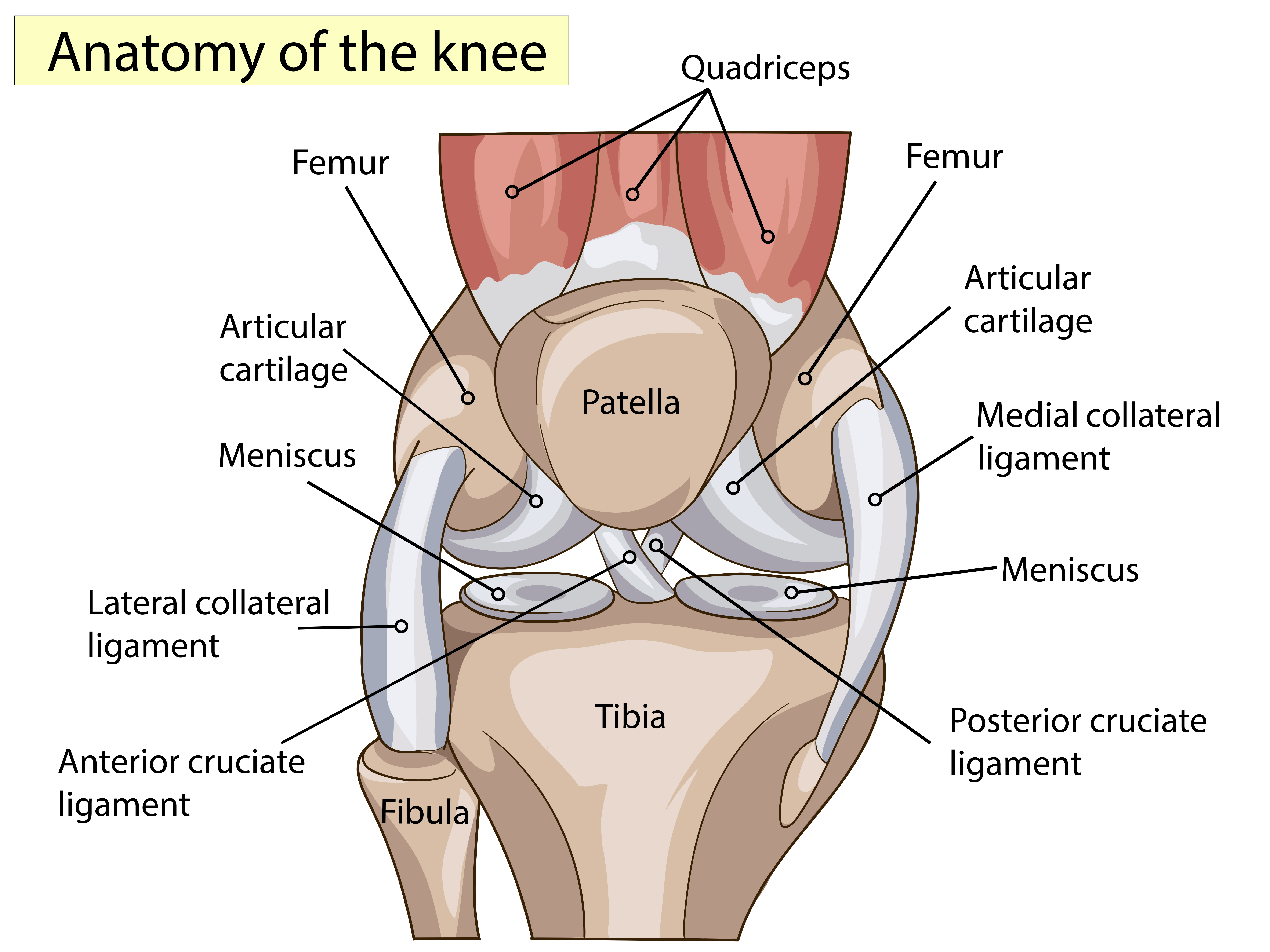It doesn’t matter if you’re a serious athlete, a weekend warrior, or simply enjoy living a healthy lifestyle that includes regular physical training and cardiovascular workouts – a meniscus tear can put you on the sidelines for 6 weeks or more. Your knee meniscus is a kidney-shaped wedge of cartilage that spans the gap between your lower leg bone or tibia and the upper thigh bone or femur.
This cartilage in both knee joints adds stability when you rotate – even absorbing the shock of impact when jumping, running, or walking. Functionally, the meniscus acts to prevent damage between the bone surfaces of the upper and lower leg. A meniscus tear can happen anytime a person experiences an awkward leg twist that negatively affects the knee. But, it is in contact sports such as soccer,tennis, volleyball, basketball, and football where the chances are greater, due to the quick lateral moves and changes in motion, direction, speed or the result of jumping and landing hard.
What is a Meniscus Tear?
If you hear a popping sound after an awkward twisting move, followed by pain and swelling, it is a good chance your meniscus has torn. Even if these symptoms were not present during and immediately following the incident, if you find your knee suddenly locks up or you are unable to fully extend or bend your knee without pain, a meniscus tear may be suspect. In either of these cases, a thoroughly examination by a doctor and an array of x-rays will be necessary.
There are several of types or patterns of cartilage injury that are connected with meniscus damage. The five most common are:
- Radial tear is most common and may require the removal of the damaged portion of cartilage
- Flap tear where the outer flap of cartilage is caught in the knee joint and must be removed
- Horizontal tear is easier to repair and may be sewn back together depending on location
- Incomplete tears are also common and may not require any surgical treatment
- Complex tears can feature multiple meniscus tear patterns and may require both removal and repair
Additionally, meniscus tears can be classified by the location of the tear – at the anterior horn in the front, the posterior horn in the back of the cartilage, or central tears on the inner portion of the meniscus. Central portions of meniscus cartilage do not receive a flow of vascular blood, making them difficult to repair, but those tears affecting the peripheral are amenable to surgical repair and healing.
How to Prevent These Knee Injuries
Children, adolescents, and adults with osteoarthritis are more prone to these types of knee injuries that can also occur from tuning awkwardly, getting up too quickly, or squatting – especially if they have a weak or thin menisci. Exercises that strengthen leg muscles will help the knee to remain stable during awkward motions. For these groups, wearing the right athletic shoes or other protective gear such as a knee brace may be the answer.
For those in physical fitness training or participating in sports activities, here are some tips to prevent knee injuries that feature a torn meniscus:
- Learn the proper form and movement from a professional fitness trainer
- Always stretch and warm-up before any rigorous activities
- Wear the right footwear and keep laces tied securely
- Be watchful during any high impact or fast moving sports
If you do suffer a knee injury during activities, but are not sure of the severity, your first response should be the RICE method of treating musculoskeletal injuries according to WebMD:
“…rest, ice, compression, and elevation (RICE) as one of your first treatments. The RICE method is a simple self-care technique that helps reduce swelling, ease pain, and speed up healing. You can treat minor injuries with the RICE method at home. You might try it if you have an achy knee, ankle, or wrist after playing sports. If you have pain or swelling that gets worse or doesn’t go away, see a doctor.
Symptoms and Physicians Diagnosis
If you are experiencing knee swelling and pain after an unusual experience during some activity, you can look for these signs that will usually point to a meniscus tear:
- persistent pain or sharp pain when touched
- swollen knee or tender knee tissue
- a popping or clicking sound when knee is moved
- unable to obtain full range of leg extension
- problems walking or climbing without discomfort
- inability to support yourself
Your physician is the only one who can properly diagnose why you are experience any of these symptoms. An x-ray will rule out any degenerative disease such as osteoarthritis and allow your doctor to view any injury to the bones. Next, a McMurray test will establish your knee’s range of function by straightening, bending, and rotating. Your doctor will also be listening for a popping sound which will directly indicate a meniscus tear.
But, it is an MRI that will accurately show any damage to cartilage and ligaments and will assist in the physician making a full diagnosis. If these structures appear damaged but are inconclusive, an ultrasound test or a surgical examination by arthroscopy involves cutting through the knee and using a camera and light for further review.
How to Treat a Meniscus Tear
Treatment of meniscus tears depend on the location and the severity of the injury. The pain and swelling is first reduced using pain killers such as NSAIDs such as aspirin, ibuprofen, or Celebrex. It is important to not put full weight on the knee until further treatment can repair the injury and the knee is fully healed. The only other treatments will include surgery to repair or remove the injured cartilage. Afterwards, rehabilitation and recovery can take up to six weeks.
Contact Chris Keith, offering professional personal fitness training in San Diego, CA including weight training, cardiovascular conditioning, and stretching routines that can help prevent knee injuries and monitor your progress as you return to full activity after a meniscus tear.




